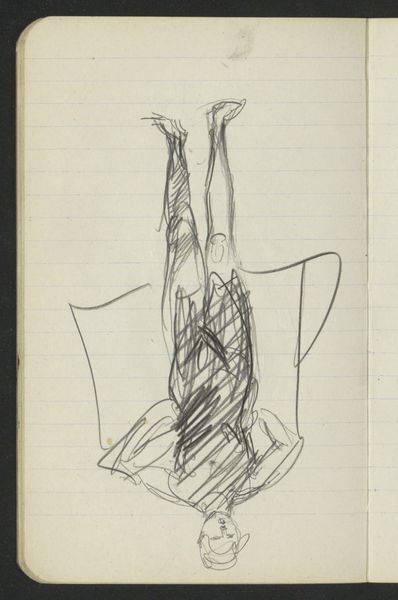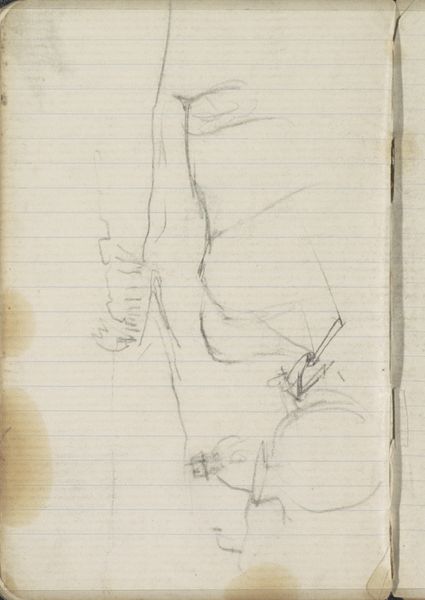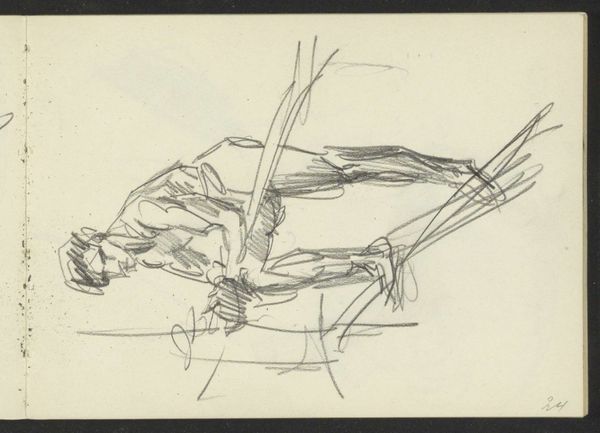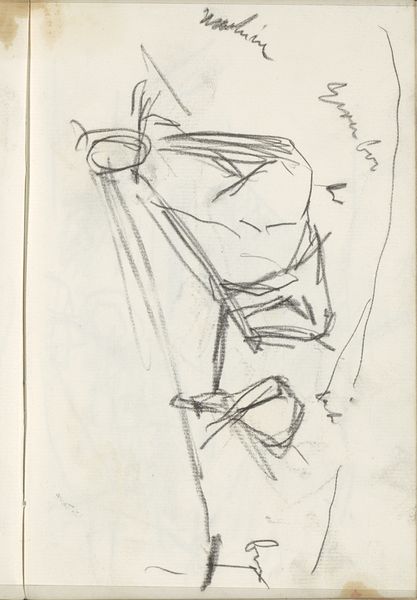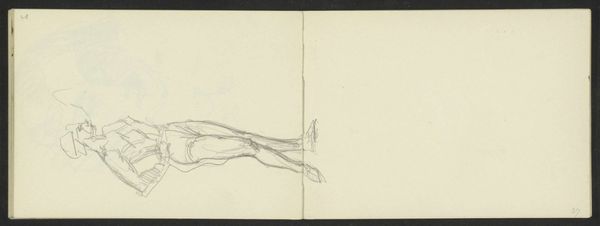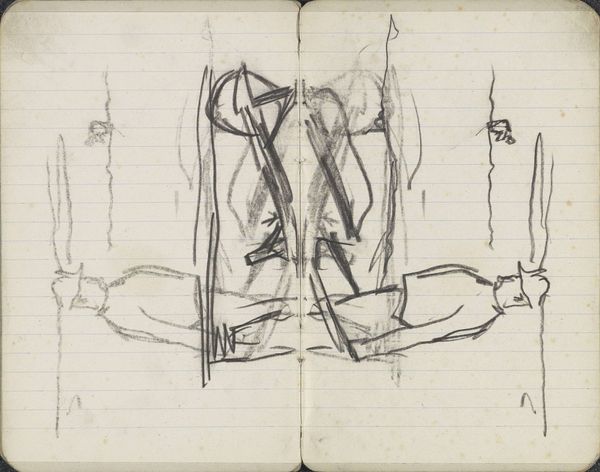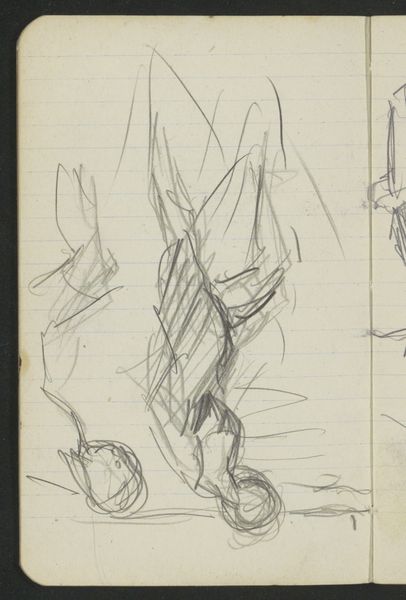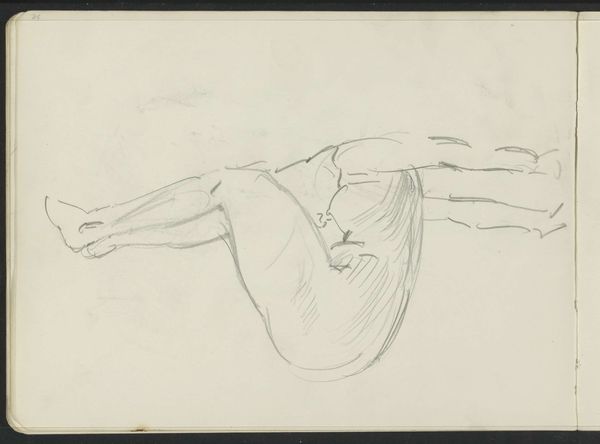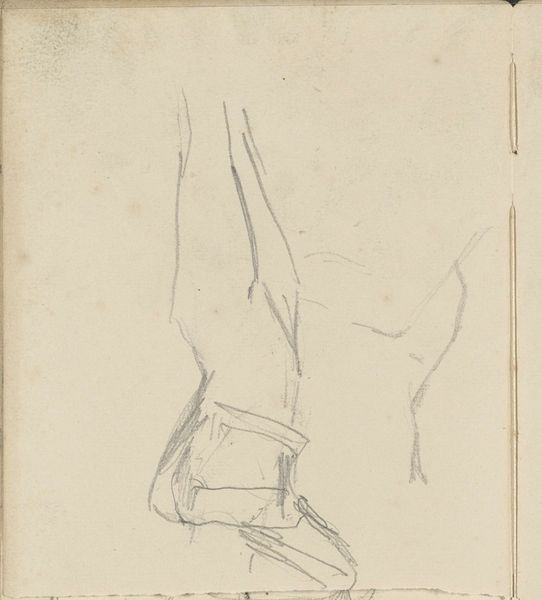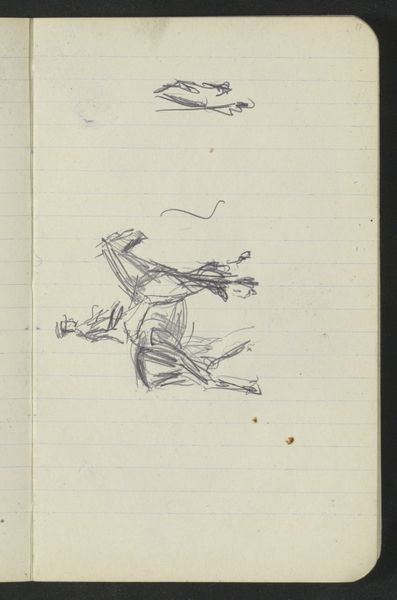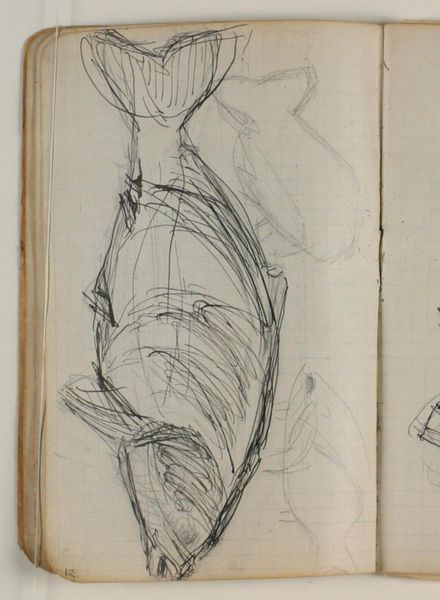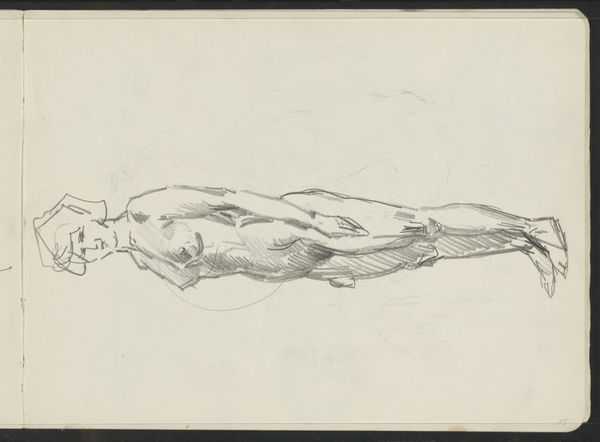
drawing, pencil
#
drawing
#
imaginative character sketch
#
quirky sketch
#
pen sketch
#
figuration
#
personal sketchbook
#
ink drawing experimentation
#
intimism
#
pen-ink sketch
#
pencil
#
sketchbook drawing
#
nude
#
sketchbook art
#
fantasy sketch
#
initial sketch
Copyright: Rijks Museum: Open Domain
Curator: Welcome. We’re looking at a work by Isaac Israels, titled "Standing Woman, Possibly in Bathing Suit". It’s a pencil and ink drawing that likely dates from between 1875 and 1934. You can currently find it here at the Rijksmuseum. Editor: It looks like a fever dream! I mean that in the best way. The lines are so raw and energetic, it feels like he's captured a fleeting moment, a memory almost dissolving before our eyes. It has that upside-down quality; like when you're a kid hanging off the sofa, looking at the world from a completely different perspective. Curator: That sensation of a dissolving memory is interesting. Israels belonged to a generation of artists attuned to the transience of modern life. His depictions of women are especially insightful when considered against the backdrop of rapidly shifting gender roles at the turn of the century. Editor: Exactly. It’s like she’s caught mid-transformation. Is she emerging from water? From sleep? From a previous version of herself? The pose is almost acrobatic, suggesting both vulnerability and a hidden strength. There's definitely something about her presence; a hint of defiance in this uninhibited display. Curator: We might explore that "defiance" by positioning the work in the context of contemporary debates around female representation and the male gaze. While nude studies have a long history, Israels’ quick, almost secretive sketching suggests a more intimate encounter, rather than a formal, academic exercise. We can interpret the drawing not just as a representation of the female body, but a commentary on the act of observing it. Editor: Well said. It certainly avoids any kind of idealization. The imperfections, the unfinished quality, are all part of what makes it feel so…honest. There’s a refreshing lack of pretense here, as if Israels were more interested in capturing the feeling of being alive than achieving some polished, flawless depiction. For me, it feels more like looking in a mirror than into a painting, capturing both awkwardness and possibility. Curator: It really does push beyond the aesthetic norms to provide valuable social commentary. Its immediacy forces us to reconsider the narratives we impose and appreciate both vulnerability and force, especially as experienced by the women who inspired this piece. Editor: Indeed. It has a curious effect. After close inspection, I think it reveals more about our own projections than Israels' intentions, and ultimately that's why it stays with you long after you walk away from it.
Comments
No comments
Be the first to comment and join the conversation on the ultimate creative platform.
